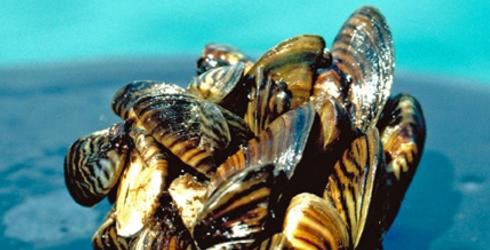Welcome to Week CLXXXIII of ‘Fishing Parkland Shorelines’. Like most of us I am a novice fisherman, loving to fish, but far from an expert. In the following weeks I’ll attempt to give those anglers who love to fish but just don’t have access to a boat, a look at some of the options in the Yorkton area where you can fish from shore, and hopefully catch some fish.
So last week, after a release from the Saskatchewan government regarding zebra mussels crossed my desk, I had begun a look into the tiny waterway troublemakers. Space cut the article short, so this week I offer up some additional material on the mussels, and what we as fisherfolk might do to stop them entering our local waters.
The tiny mussels have certainly been getting around, and becoming an issue wherever they land.
Today, zebra mussels are found throughout all the Great Lakes, Lake St. Clair and the Mississippi river watershed. Unlike the zebra mussel, quagga mussels are found to be limited to the southern Great Lakes; Lake Ontario, Michigan, Huron and Erie. They have also been found in the St. Lawrence River and north to Quebec City.
For a bit more about why the mussels are such an issue I visited www.protectyourwaters.net
There they noted zebra mussels get their name from the striped pattern of their shells. However, the pattern varies greatly to where there are no stripes, only dark or light colored shells. Zebra mussels can grow to a maximum length of about 50 mm (5-10 mm in the first year) and live four to five years.
In terms of ecological Impact; “zebra mussels have disrupted the traditional aquatic food chains of many inland lakes. Regardless of their size, inland lakes represent unique ecological systems. When zebra mussels enter into these fragile systems, their voracious filter feeding depletes the availability of microscopic organisms that play a critical part in each lake’s ecological food web. As a result, valued sportfish are impacted. Zebra mussels consume considerable amounts of these beneficial microscopic organisms and this creates less food for larval and juvenile fishes that support sport and commercial fisheries.”
It goes beyond economics too, details the site.
There is also a biological impact. “Zebra mussels are similar to other mussel species because they attach themselves to hard surfaces. However, unlike other species, zebra mussels will readily attach themselves to native mussels. This behavior is known as bio-fouling and with the spread of zebra mussels, native mussel populations have been severely reduced. Some native mussels are more tolerant than others, but even for these resistant species, becoming covered by zebra mussels makes them more vulnerable to environmental stressors, such as extreme water temperatures, lack of food, or parasites and disease. As zebra mussels spread, biologists are concerned that populations of native mussels will decline, and perhaps some of the rarer species may be completely eliminated.”
And the result is an economic impact.
“The zebra mussel attaches to hard surfaces located at moderate depths. This affinity for hard surfaces has made water intake structures, like those used for power and municipal water treatment plants, susceptible to colonization. Since 1989, some plants located in areas of extensive zebra mussel colonization have reported significant reductions in pumping capabilities and occasional shutdowns.”
The www.protectyourwaters.net site even suggests the mussels might impact human health.
“As significant filter feeders, zebra mussels may increase human and wildlife exposure to organic pollutants (PCBs and PAHs). Early research shows that zebra mussels can rapidly accumulate organic pollutants within their tissues to levels more than 300,000 times greater than concentrations in the environment. They also deposit these pollutants in their pseudofeces. These contaminants can be passed up the food chain so that any fish or waterfowl consuming zebra mussels will also accumulate these organic pollutants. Likewise, human consumption of these same fish and waterfowl could result in further risk of exposure.”
So back to the release from the Saskatchewan government.
Saskatchewan’s efforts to fend off the arrival of the mussels include testing for zebra mussels in high-risk waterbodies, along with a monitoring program that involves multiple watershed groups across the province.
Regulations in place since 2011 prohibit the importation, possession or transportation of high-risk invasive species, including invasive mussels. In 2015, provincial regulations were amended to strengthen the ability of conservation officers to inspect, quarantine and decontaminate watercraft known, or suspected, to contain aquatic invasive species.
New federal regulations in June 2015 complement these provincial regulations by enabling Canada Border Services Agency officers to check private and commercial watercraft entering the province from the United States.
Saskatchewan works closely with other jurisdictions on this issue and will continue to work with other agencies and jurisdictions to co-ordinate inspection efforts.
And a few suggestions of what individuals can do;
*Learn how to identify zebra and quagga mussels and how to prevent accidentally spreading these invasive species.
*Inspect your boat, trailer and equipment after each use. Remove all plants, animals and mud before moving to a new waterbody.
*Drain water from motor, live well, bilge and transom wells while on land.
*Rinse all recreational equipment with high pressure (>250 psi), hot water (50°C / 122°F) OR let it dry in the sun for at least 5 days.
More information about fishing and aquatic invasive species can be found in the Saskatchewan Anglers’ Guide and online atwww.environment.gov.sk.ca/fishing or www.environment.gov.sk.ca/invasivespecies




